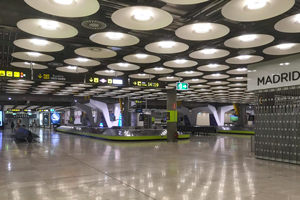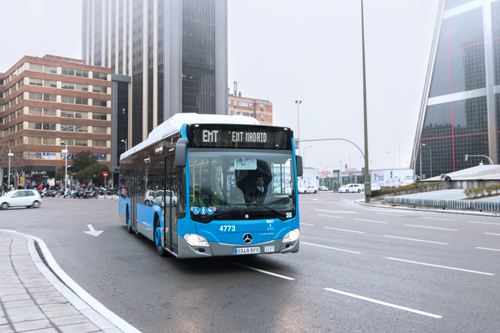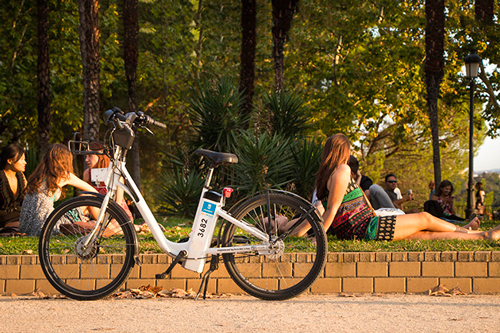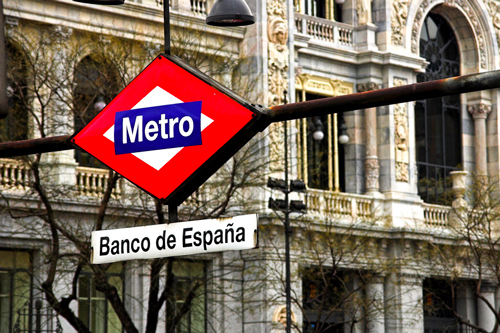Transports
Madrid Transport
Getting around in Madrid has never been easier: have a look at our simple tips
Getting around in an unfamiliar city can cause all sorts of anxieties and make us feel completely lost at times. But, visiting the Spanish capital and ensuring that you don't miss out on any of the important things to do or see is actually quite easy. In fact, any trip is a challenge that we can't affort to miss out on. Wasting time and money are two of the worst case scenarios but these are unlikely to happen if you are well prepared and choose to book some of the services you will require in advance. In the following paragraphs you will find answers to some of the most common questions, for example: how to get from the airport to the city centre, how to get your bearings in order to visit the city's main attractions, schedules and prices of the different modes of transport and how to avoid using a taxi driver who lengthens the route in order to increase the price.
Madrid's transport network
The first thing you need to know when you arrive in this great metropolis is that the transport network is quite extensive. There are 12 Metro lines, 4 light railway lines, a commuter network system with 9 lines which will enable you to travel outside the city and of course, a huge network of urban and suburban buses. Every day, thousands of people move from one area of the city to another in a reasonably efficient manner. If what you need is to get from A to B as quickly as possible, the best solution is to use the Metro although as is the case with all subways, the only thing you will be able to see are the tunnels underneath the city! Another interesting option is to use the Tourist Bus, in other words, a double-decker sight seeing bus which will give you a panoramic view of the city and its most interesting and famous monuments.
The city and intercity transport system
The Metro and suburban trains
it would be impossible to discuss the subject of transport in Madrid without mentioning the metro: twelve underground lines and a subterranean branch line whose function is to enable transfers between different lines. With the latter, you can access Lines 2 and 5 at the Ópera station and Lines 6 and 10 and the intercity service from Padre Pío. The Metro lines are numbered 1 to 12 and the branch line is identifiable with an "R." However, if we're talking about the light rail service metro ligero, there are only 4 lines which are the principal connections between various different outlying districts of the city and the centre.
The commuter service is a mixture between the Metro and the railway services as this mainly serves to connect the outlying areas of the city with the centre. This services is operated by Renfe and is really useful for those who work in the capital on a daily basis but who live in one of the towns situated in the provinces as well as for those who want to visit any of the wonderful towns that surround the capital. There are 10 Lines on this service. If you need to take one of these Lines at the airport, the C1 and C10 Lines connect Terminal 4 (T4) with the train stations but there is an important factor to remember in this instance: T4 is quite a complex Terminal due to its vast size.
City and suburban buses
Madrid's bus network is very large. 203 routes that cover more than 3,500 kilometres! You will need to signal to the driver if you want to board the bus and, of course, advise of your intention to get off at your desired stop in a timely fashion. The company that operates the bus service has started to substitute the buses that run on bio-diesel with vehicles that run on gas or are electric. Individual tickets can be purchased once you are on board the bus but remember that you will need to have enough change with you as they will only accept a maximum denomination of €5.00. If you are going to spend a few days in Madrid getting to know the city, the most practical solution amongst the available option is to get a touríst pass which you can top up and which can be purchased in the airport terminals and at the Metro stations. You can choose from 1 to 7 days with prices ranging from €8.00 to €70.00.
Getting around by car
There are many car rental companies who will rent you a car for getting around the city. However, it is worth remembering that the volume of traffic in the capital is horrendous, so much so that on certain days there is a possibility that you will be prohibited from driving in the city centre because of the vehicle's registration number. In addition to this, let's not forget how inconvenient it can be trying to find somewhere to park and having to pay for parking in specific zones. In order to assist with the latter, we would recommend down-loading the App Parkclick.
Getting around by bicycle
Madrid is a reasonably flat city without too many hills which makes life on a bike somewhat easier. There are numerous docking stations from which you can hire a municipal bike from the BiciMAD service. You will easily be able to find a free bicycle at different points across the Spanish capital.
Using private and public taxis
There is a very large taxi service in Madrid which spreads right across the city. You can recognise the taxis due to their white colour with a red stripe and they can come in really handy for getting around the city, especially at times when public transport services have ceased to operate. However, the most strongly recommended option if you are going to spend a holiday in Madrid is to make use of a Private Taxi: you will know the exact price at the time of making your booking and can thus avoid encountering any dishonest drivers who may take advantage of the fact that you don't know the journey times and distances in the city. With Taxileader, you will be choosing a quality service at a competitive price. In addition to this, this service is essential if you need a transfer service to take you from the airport to the hotel or vice versa. Forget about having to wait in a long queue and the inconvenience of having to change onto different modes of public transport: book now at Taxis in Madrid!
Public Transport Timetables
The Metro: Every day of the year, from 06:00 AM to 1:30 AM.
The Light Rail Service: The timetable for every day of the year is from 05:00/6:00 until 00:45/01:30.
The commuter service: The general operating times are from 05:30 until 23:30.
Buses: The general operating times are from 06:00 until 23:30.
The Night Buses (called the búho): operate practically all night. You will find information about the service here day-time and night-time.
Public Transport charges
There are many different kinds of tickets available in Madrid but here we will list the most appropriate if you are just spending a few days in the Spanish capital.
Single Ticket (metro, tram, buses, intercity): €1.50
Tickets for 10 journeys: (zone A on the Metro, trams and buses run by EMT): €12.20
Tourist Pass: zone A: (metro, buses, commuter trains, light railway ML1) €8.40 - €35.40 and zone T: (metro, buses zone T, commuter services and light railway ML2, Ml3 and ML4: €17.00 - €70.80)
In addition to the above, you can also get the Multi Pass for €2.50. The Multi Pass is rechargeable and isn't only for individual use, (which means you can share it with friends and family) and will enable you to combine different types of tickets inside the Pass. You can obtain one of these and recharge them at the ticket machines in the Metro stations and at a tobacconist. These are very practical if you want to use different modes of transport such as the Metro, the light railway, city and intercity buses).
All that remains is for us to wish you a pleasant stay and above all, safe travel around the Spanish capital!
















